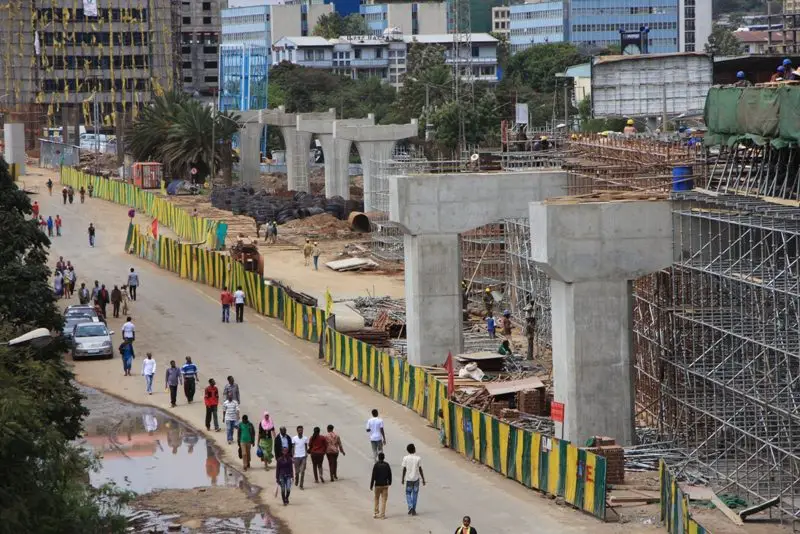Ethiopia’s construction sector will outgrow that of neighbors in the region over the next ten years, according to projections by BMI Research International. The construction sector will grow at an annual average growth of 11.6% and will be fueled by a swell in infrastructure investments in the region. BMI said it expected the growth to be pushed in future, by residential and non-residential sectors.
Although the rate is expected to be slower than that in the previous years because the government will be unable to maintain spending in the infrastructural sector, it is expected that the growth will remain to be one of the highest growing in the world over the ten year’s forecast.
Ethiopia construction sector attained a 23.7% annual growth in 2014, and thus the growth this year was anticipated. Although Ethiopia’s Growth and Transformation Plan (GTP), under which the government is expected to undertake various construction projects in energy and infrastructure, is expected to push investment in the country, BMI Research says that the plan will be less intensive in relation to focusing on physical infrastructure since the country’s fiscal position is set to come under pressure.
Ethiopia has, according to BMI Research, double the amount of infrastructure project investments compared to Nigeria. With USD20bn worth of projects in pipeline, it is expected that the construction sector will have an output of USD3.2bn this year, so reports BMI Research. Kenya’s construction sector growth is expected to be 9% this year and maintain the trend over a ten years’ projection. Uganda’s growth rate in construction sector over 2015 will be 7.3% year-on-year. Tanzania construction sector will grow at real growth of below 9.5% over 9.5% per year during 2015-2019.
Most investments are being channeled to wind power projects in Ethiopia and hydropower projects, although significant investments are being put to residential and non-residential housing sectors and railway building. Ethiopia is looking to hook to Djibouti and Kenya ports through multiple lines. An increased spend in infrastructure has seen fixed investments in the country go high from 25% to 40% of GDP from 2008.
BMI Research notes that the government will not be able to sustain the high of fixed investment and although international investors in manufacturing and other investments are set to provide construction opportunities, they will not be able to cover up the government’s slump in investment in the sector.
Apart from government infrastructure investment effect on the growth, other examples to help in the growth include residential and non-residential sector, massive investments in industries – including the USD2.2bn Huajian Group Industrial Zone near Addis Ababa – and numerous investment in textile factories and increased entry of Chinese manufacturers.

